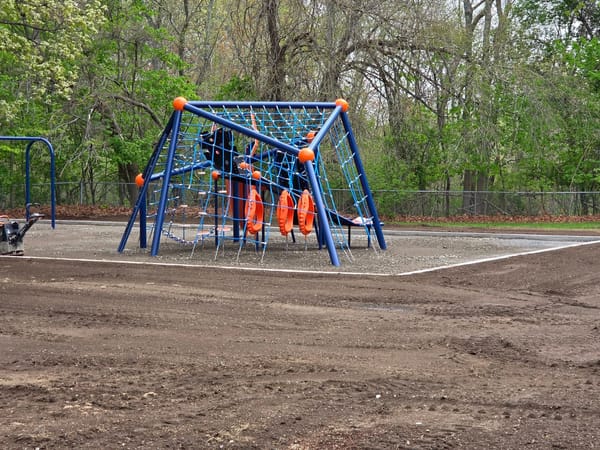Our Common Fishbowl
Plants & Animals Column #1

My first fish froze to death overnight next to an open window. The poor betta hadn’t known what it was getting into, but this was just the first of my attempts at fishkeeping over the years. From the betta bowl, I progressed to a 5-gallon tank and then to my current 55-gallon tank. I’ve had tanks overwhelmed with algae: green algae, hairy algae, and the dreaded black algae. One tank turned so milky white I couldn’t see the fish.
Another tank was just fish, gravel, a plastic backdrop, and a mechanical filter. I thought it looked great. During a power outage the filter stopped, and all the occupants died.
My view of aquaculture changed when I read an article describing a “Scandinavian” aquarium philosophy.
The article defined a successful aquarium as “an aquatic terrarium” primarily designed to grow healthy plants. Just a few fish are added “to feed the plants.” That instantly changed my view of setting up fish tanks! I realized my previous tanks had not been healthy functioning ecosystems—they were merely cages.

I now strive for plants and bacterial filtration that process the animal waste. Then, the amount of mechanical and chemical filtration needed is greatly minimized. The tank virtually takes care of itself.
The Earth, the planet on which we all live, works in exactly the same way. It was designed/created/evolved in the same sequence used to establish a successful fish tank: first came the hardscaping, then the water. Bacteria came next, then plants, and finally the animals. The result was a balanced ecosystem. Bacteria and animals ate the dead plants, and living plants absorbed the waste and dead animal remains and provided oxygen. Everything grew together in harmony and balance. Species came and species disappeared following their ability to adapt to changing environments or cataclysmic events. If a species became overcrowded or overpowered by another species, they went extinct. None of them ever had the power to affect the entire planet.
And then along came Man.
Humans can overpopulate by stealing resources from beyond their immediate environment. They use fire as a potent tool not just for cooking, but to eliminate self-generated waste, to burn fuel to power machines and vehicles, to clear forests. Air is our equivalent to water in a fish tank. If we pollute it, we can’t breathe. If the planet can’t properly breathe, it also can’t survive as we now know it. More and more evidence show that the earth is reaching an inflection point in its ability to maintain stability: scientific data from the atmosphere and the ocean; increasingly intense storms, temperature swings and flooding; overpopulation with global conflicts, starvation, and lack of sanitation and housing for large segments of the global population.
Something must be done before the entire ecosystem collapses. But what can we tiny individuals possibly do to make any impact on a global scale?
Helping to protect our ecosystem doesn’t have to be overwhelming; simple steps taken by individuals can make a difference.
Think global but act local: Support and volunteer with organizations dedicated to wildlife and environmental protection; write to your congress people and insist that they do the right things. I’ve done it – they do listen, and they do respond. If they don’t, vote them out! Vote at the local, state, and national levels!
If we own property, we must manage it as our personal ecosystem. Continuing with the aquarium analogy, the mechanical filter for our house/property is trash pickup, garbage disposal and toilet flushing. Minimize those things. Recycle and reuse. Compost or take advantage of the food waste pickup program the Town now offers. I do, and my trash barrel sees 50% or less of what it used to.
Use only organic fertilizers. The only product I put on my lawn is Milorganite, which is composed entirely of composted waste from the Milwaukee sewage treatment plant. (Hopefully that compensates somewhat for my own flushing.)
Plant and encourage native species, especially trees. Do we really need monoculture lawns on our entire property? They serve no environmental purpose. Perfect, one species lawns were never the standard fare until lawn chemical companies told us they should be. My lawn is tiny, about 5% of my land, just for my dogs to have a place to play ball. I put down sod, then sprinkled it with clover seed. Clover is a nitrogen fixing plant, capturing nitrogen and storing it in the ground. Clover feeds the lawn!

If we all ensure that our little piece of the planet is healthy, it will add up.
When I feel overwhelmed by the global situation, I find it very helpful to walk through my yard and see flowers, plants, bugs, birds, and animals in my small, balanced ecosystem. My yard feels like an environment, not a cage.
All the wonders of nature can exist in our own back yards. More about that in future installments of Plants and Animals.
Bill Boivin is a scientist, retired from 30 years of active duty with the United States Public Health Service. He is a Burlington Town Meeting Member and Conservation Commissioner. He and his wife, Jane, grew up in Lynn and now live in Burlington with their 2 mini dachshunds, 7 chickens, and Maya, a ball python. Bill and Jane have shared a love of nature, gardening, and wildlife for over 50 years. They have fostered, healed, raised, and loved a remarkable variety of animals in their time together. Learn more about Bill





